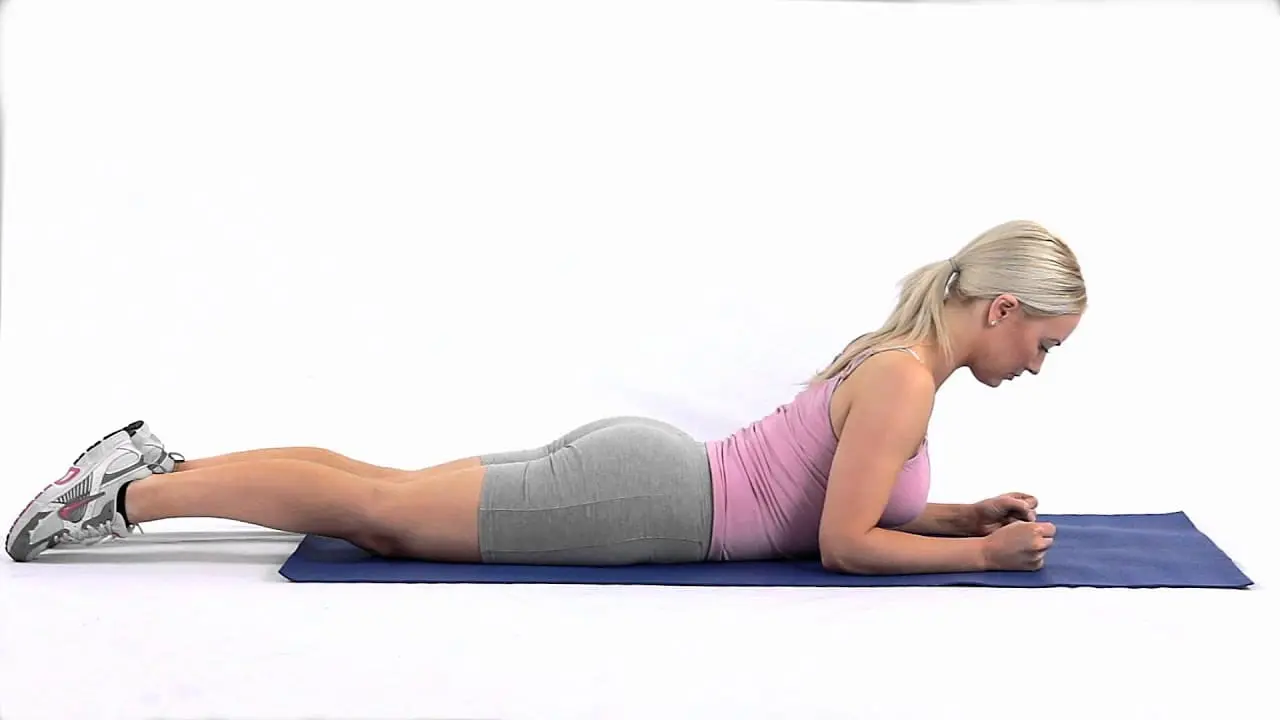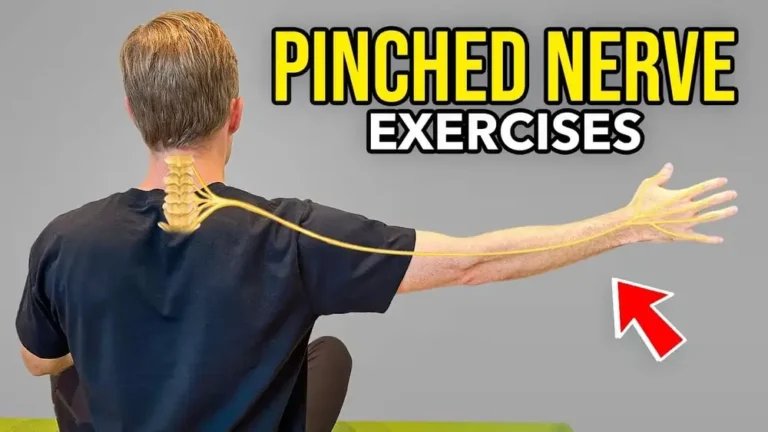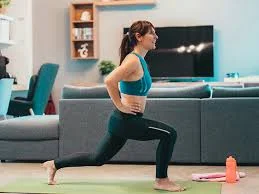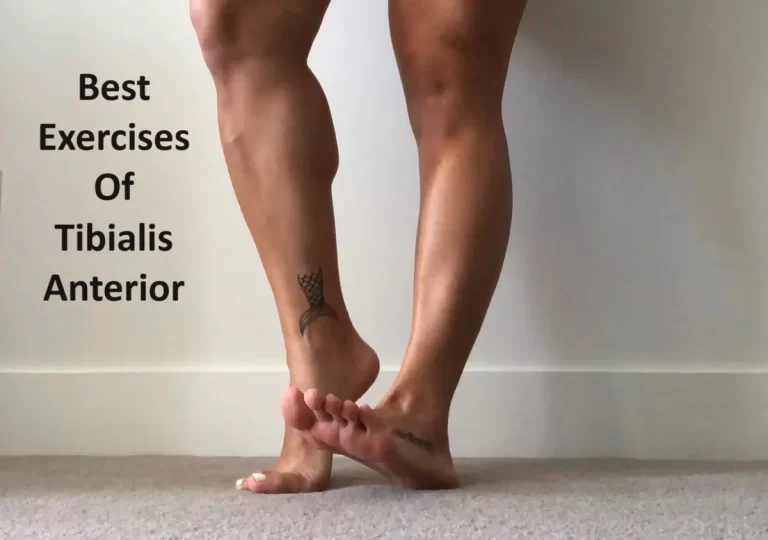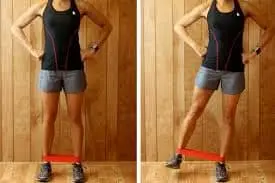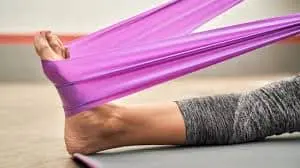12 Best Exercises for Lumbar Spondylosis
The most natural therapy for lumbar spondylosis recovery is exercise. Exercise increases spine mobility while also strengthening the muscles in our lower backs.
A significant portion of the global population suffers from lumbar spondylosis. Roughly 55–60% of those over 60 are thought to have lumbar spondylosis to some degree. The aging of the lower spine’s discs and vertebral joints due to natural agility is the cause of its high frequency. Genetics, sedentary lifestyle, obesity, and bad posture are further contributing factors.
Thankfully, physical therapy can improve overall back strength and reduce lumbar problems.
What is Lumbar Spondylosis?
A disorder known as lumbar spondylosis can come on by facet joint or lumbar disc degeneration. It is a degenerative condition affecting the lower vertebrae’s discs, vertebral bodies, and related joints. These are progressive, irreversible alterations that typically result from an older patient’s exposure to mechanical force.
Degeneration of the structural segments of the spine is the primary cause of lumber spondylosis. Age is the usual risk factor for developing lumber spondylosis. In fact, on imaging tests such as MRIs or X-rays, the majority of people will show signs of spondylosis by the age of 65.
Although lumber spondylosis is common, it is typically not severe. Surgery is not usually used to treat lumbar spondylosis. Steroid injections, muscle relaxants, anti-inflammatory medications, and pain relievers are examples of medical therapeutic alternatives. In addition to having various exercises, physical therapy is incredibly useful in relieving pain.
Causes:
Lumbar spondylosis can have a variety of causes, some of which are as follows;
- Ages-old
- Genetics
- Back pain,
- Continual stress on the spine
Signs and symptoms:
- lower back pain.
- legs are numb to the touch.
- Weakness.
- Challenging to stand and sit.
How Can Exercises Help in Reducing Pain from Lumbar Spondylosis?
Your core (abdominal) and spinal muscles should be strengthened via the exercises listed below. Your body will benefit from a healthier spine if the muscles surrounding your backbone support and stabilize your back, even if you experience mild pain.
The secret to back health is having a strong core. Strong muscles supporting your spine will likely reduce the symptoms of spinal osteoarthritis, including joint discomfort and immobility.
Exercises for Lumbar Spondylosis:
Many people find the exercises below to be beneficial. Adjust your position as needed to ensure comfort.
Knee to chest
This exercise releases tension in the lower back muscles.
- Lie down on your back to start.
- Keeping the other foot on the ground, bring one knee up to the chest.
- Hold this position for a few seconds.
- Lower your leg.
- Then return to your neutral position.
- Then relax.
- Repeat this exercise five to ten times.
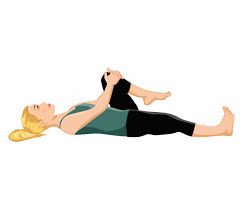
Cat-cow
- Start by getting down on your hands and knees in the tabletop posture.
- Make sure your back is straight.
- Place both of your hands and feet securely on the ground.
- As you open your eyes and inhale, bring some air into your stomach.
- Hold this position for a few seconds.
- With your back to the ceiling, pull your chin into your chest and release the air.
- It appears like your lower back is slightly stretched.
- Hold this position for a few seconds.
- Then return to your neutral position.
- Then relax.
- Repeat this exercise five to ten times.
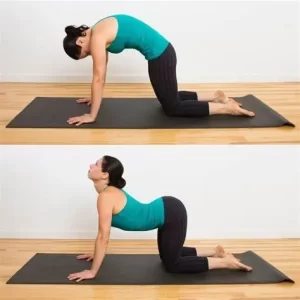
Bird dog
- Placing your hands and knees about hip-width apart, begin in the tabletop position.
- Take a straight back, place your knees behind your hips, and place your wrists beneath your shoulders.
- Lift your left knee off the mat with your raised right hand.
- Keep your balance while you straighten your arm in front of you and your leg behind you.
- Make an effort to move cautiously and slowly.
- Hold this position for a few seconds.
- Then return to your neutral position.
- Then relax.
- Repeat this exercise five to ten times.
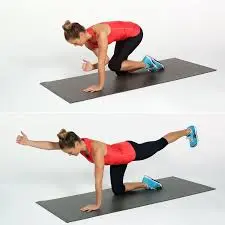
Front plank
- Put your forearms and toes on the ground and face downward in a plank position.
- Lay your forearms out in front of you, putting your elbows under your shoulders.
- You should be staring at the floor, yet your head is relaxed.
- As you move your belly button toward your spine, contract your abdominal muscles.
- Keep your body in a straight line from your ears to your toes, without bending or loosening, and maintain a firm and upright spine.
- This is the position of the neutral spine.
- Make sure your shoulders are down and not pulled up close to your ears.
- Hold this position for a few seconds.
- Then return to your neutral position.
- Then relax.
- Repeat this exercise five to ten times.
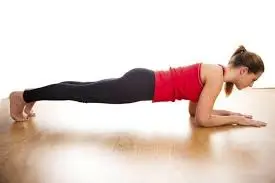
Lower-back-rotational-stretch
- Start with lying down on the ground.
- Bend your both knees.
- Avoid bending your neck or lowering your back to the ground.
- Take a deep breath.
- This should be a relaxed and comfortable position for you.
- Lower your knees to the same one side.
- Shift your focus to the opposite side.
- Maintain a level shoulders-to-floor position.
- Hold this position for a few seconds.
- Change sides gradually.
- Then return to your neutral position.
- Then relax.
- Repeat this exercise five to ten times.
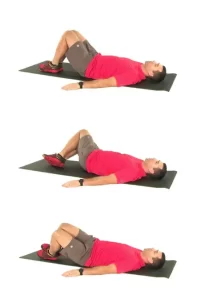
Bridging
- Lay comfortably on your back.
- Use a yoga mat or another soft place to practice this.
- Push through your feet to raise your hips off the ground, keeping your knees bent and your feet flat on the floor.
- Tighten your butt muscles when the exercise reaches the highest point.
- Hold this position for a few seconds.
- Then return to your neutral position.
- Then relax.
- Repeat this exercise five to ten times.
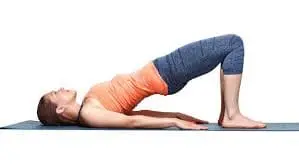
Double knee to chest
- Begin by lying down on the ground in a comfortable position.
- Now bend both your knees.
- Contracting your stomach muscles can be achieved by pulling your belly button to the floor.
- Using your hands, raise both legs to your chest.
- Hold this position for a few seconds.
- Lower your legs now.
- Then return to your neutral position.
- Then relax.
- Repeat this exercise five to ten times.
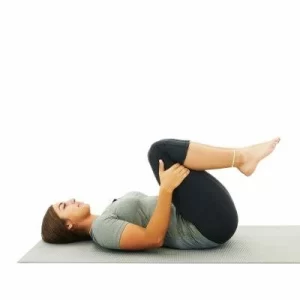
Modified sit-ups
- You must lie on your back on the mat to perform this exercise.
- One leg should be flexed while the other remains stretched and flat.
- You should place your hands beneath your lower back’s arch to preserve its natural curve.
- Apply pressure to your hands while you slowly raise your head, shoulders, and chest off the bed as a single unit to avoid twisting your lower back.
- Your head does not rise very high off the ground during this limited range of motion.
- For a few seconds, maintain this posture while taking deep breaths.
- Then return to the starting position gradually.
- Then relax.
- Repeat this exercise five to ten times.
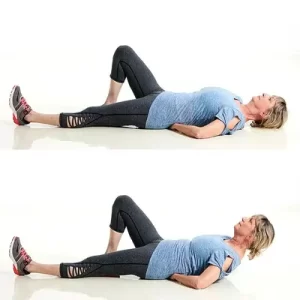
Back extension exercise
Back extensions alleviate stiffness and help with posture.
- Start by lying on your stomach and supporting yourself with your elbows.
- Press down with your hands to lift your back while maintaining an extended neck.
- Your stomach muscles need to feel somewhat stretched.
- Hold this position for a few seconds.
- Then return to your neutral position.
- Then relax.
- Repeat this exercise five to ten times.
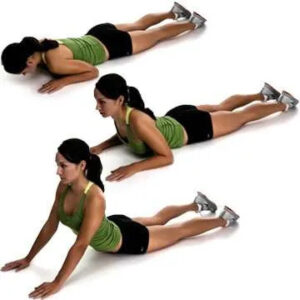
Pelvic tilt
By engaging your abdominal muscles, pelvic tilts can relieve lower back stress.
- Arms by your sides, feet flat on the ground, and knees bent, enter a laying position on your back.
- Put your arms out at your sides, palms down.
- Your neck should be in line with your spine and the back of your head should be in contact with the mat.
- Leave space between your lower back and the mat so that your back can continue to curve naturally.
- Your hand ought to be able to glide inside this opening.
- Take a breath.
- Exhale as you squeeze the area between your lower back and the mat or floor, lifting your back with your abdominals pulled up.
- It will cause a slight flexion of your lower back.
- Hold this position for a few seconds.
- Then return to your neutral position.
- Then relax.
- Repeat this exercise five to ten times.
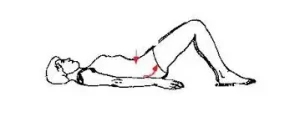
Wall angels
- Place your feet a few inches away from the wall and bend your knees slightly while standing with your back to the wall.
- Slide your chin back into the wall to help extend your neck, and press your back on the wall while you’re doing it.
- Arms raised at a ninety-degree angle, place your elbows first and press the backs of your hands against the wall.
- To make a Y pose, slowly extend your arms above your head.
- While doing this, make sure your entire back, head, elbows, and hands stay in touch with the wall, and that your shoulder blades stay down.
- Hold this position for a few seconds.
- Then return to your neutral position.
- Then relax.
- Repeat this exercise five to ten times.
Lying hamstring stretch
- You must lie in a supine position to perform a hamstring stretch.
- Lift one leg off the ground slowly while keeping it straight.
- Gently pull the leg towards you while holding your hands behind your calf or thigh until you feel a stretch in the back of your thigh.
- Hold this position for a few seconds.
- Then return to your neutral position.
- Then relax.
- Repeat this exercise five to ten times.
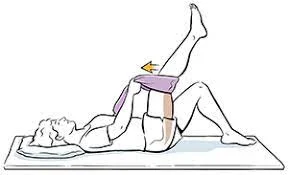
When exercising, what safety precautions need to be taken?
- Stretch and warm up before working out.
- Maintain proper posture during the exercise.
- Stay away from intensive exercises.
- If doing exercise is difficult for you, stop.
- In between sets of exercises, rest.
- Try to wear comfortable, loose-fitting attire that won’t limit your range of motion when working out.
- When you stretch a tight muscle, it’s normal to feel pain. However, during the stretch, you shouldn’t experience any sudden or intense discomfort.
What times do you not work out?
- A burning sensation in the muscles
- You don’t feel good.
- If any pain or numbness is experienced.
- Fever
- Headache
Which exercise ought to be stayed away from?
- Heavy lifting,
- Prolonged bending,
- Twisting,
- Stay away from any jobs or hobbies that put a strain on your lumbar spine.
- Avoid doing activities requiring quick, forceful movements.
- You should refrain from doing any physical activity that hurts or is uncomfortable for you.
- Avoid high-impact activities like jumping and sprinting.
Lifestyle modifications when managing lumbar spondylosis:
A few lifestyle modifications combined with prescription medications can help effectively manage lumbar spondylosis. The goals of these adjustments are to lessen the strain on the spine, encourage healing, to improve general health.
Consider the following lifestyle modifications:
- Stay away from high-impact activities
The symptoms of lumbar spondylosis can intensify when engaging in repetitive or forceful motions, such as jumping or jogging. Make the switch to low-impact, spine-friendly options.
- Maintain proper posture
The signs and symptoms of lumbar spondylosis might be made worse by bad posture. It is possible to reduce pain and stop additional injury by keeping good alignment when standing, sitting, and walking. Back-strengthening exercises and the use of ergonomic furniture are also beneficial to good posture.
- Continue being active
A regular exercise regimen is crucial for managing lumbar spondylosis. Walking, biking, and swimming are low-impact exercises that make the muscles supporting the spine more flexible and strong. Consultation with a doctor or physical therapist is essential for choosing a suitable fitness program for your particular situation.
- Take rest periods
Take regular breaks to stretch and switch positions if your job requires you to sit or stand for extended periods. This is especially crucial if you have a sedentary lifestyle. This lessens the tension in your lumbar region and helps relieve stiffness.
By adding these lifestyle changes into your daily routine, you can manage lumbar spondylosis successfully and improve your quality of life. Never skip consulting the doctor before starting any significant changes to your diet or exercise regimen.
Summary:
The common sedentary lifestyle of today is contributing to an increase in lumbar spondylosis, a degenerative condition affecting the lower vertebrae of the spine. This illness is characterized by the gradual degradation of the facet joints and spinal discs, which results in chronic back pain, stiffness, and decreased mobility.
Having said that, specific exercise is necessary to treat lumbar spondylosis, improve posture, and maintain good spine health.
FAQ:
In which positions should one avoid if they have lumbar spondylosis?
Sleeping on your stomach puts additional strain on your lumbar spine because it is more likely to arch. So, for people with spondylosis, sleeping on one’s stomach is generally not the best option. When side sleeping with flexed knees, there is less compression on the lumbar spine.
How should lumbar spondylosis be treated?
The first step toward strengthening the muscles that support the spine is almost always physical therapy. Epidural steroid injections are sometimes used as a pain and inflammation reliever. Anti-inflammatories and other short courses of oral pain medicine may also be recommended.
Which sleeping posture is ideal for people with lumbar spondylosis?
It’s often accepted that the best sleeping position for spinal health is on your back. It could take some getting used to given that for a lot of individuals, this is also the least comfortable position to sleep in.
Can someone with lumbar spondylosis lead a normal life?
There are several things you may do to make daily living easier if you have lumbar spondylosis, such as reducing the amount of bending, lifting, and carrying heavy objects that strain your lower back.
Is there a permanent cure for lumbar spondylosis?
Loss of motion and back pain are possible symptoms of this specific type of arthritis. Although there is no known treatment for lumbar spondylitis, most patients may control their symptoms with conservative measures. If you experience neurological or other incapacitating consequences, your physician might advise surgery.
For lumbar spondylosis, is yoga beneficial?
Yoga may assist in easing the lower back pain and stiffness brought on by lumbar spondylosis. By practicing yoga poses that promote spinal health, flexibility, and pain management, people with lumbar spondylosis can find comfort and an improved quality of life.
When I have lumbar spondylosis, can I still exercise?
The condition is characterized by increasing facet joint and spinal disc degradation, which results in stiffness, restricted range of motion, and chronic pain in the back. However, focused exercise is essential for managing lumbar spondylosis, maintaining posture, and supporting ideal spine health.
Is spondylosis in the lumbar region serious?
Although lumbar spondylosis is typically not dangerous, you should consult a physician at away if any of the following signs appear: Sciatica is typified by pain, tingling, or numbness that radiates from your back down your legs, feet, or toes. variations in the way you walk or the difficulty you face.
References:
- June 25, 2024; Tirgar, P. The Top 9 Most Effective Exercises for Lumbar Spondylosis – Mobile Physiotherapy Clinic. The best lumbar spondylosis exercises are available at https://mobilephysiotherapyclinic.in.
- November 6, 2023; Movva, V. The Complete Manual for Treating Lumbar Region Spondylosis. In India, RegenOrthoSport. The definitive manual for treating lumbar spondylosis can be found at https://regenorthosport.in/
- May 8, 2024: Nakamura, K., and Nakamura, K. Exercises for Spondylolysis to Stabilize Your Lower Back. Bodi Initiation. Spondylolysis exercises to help support your lower back: A website dedicated to empowering women
- 10 January 2024, Admin. What kind of exercise is best for treating lumbar spondylosis? Sanjeevanam. How should a person exercise if they have lumbar spondylosis? Sanjeevanam’s blog can be found at this URL.
- Image 8, 2018 August 13; Morrisey, M. Modified Curl-Up Exercise – 166703623692521372, a 10-Minute Core Workout for Strength and Stability – SilverSneakers, Pinterest.

